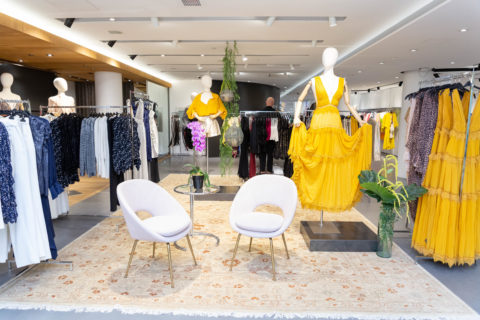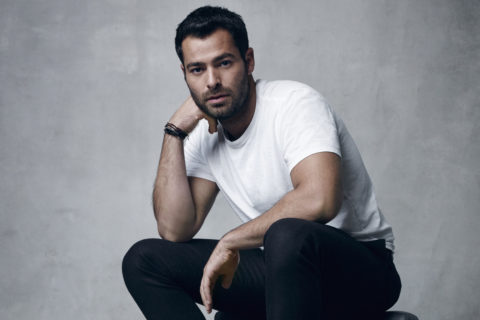Life Lessons with Jonathan Simkhai
“Obviously numbers are what keep the business going, but the personal connection with customers is really why I do this.”
This is the first instalment in Life Lessons, a new series encompassing interviews with figures in the fashion industry whose success we admire and can learn from.
Jonathan Simkhai, the Los Angeles-based designer of oddball, hyper-feminine womenswear, is one of the most quietly resilient designers in the business. He founded his eponymous label in 2010 and over almost a decade in business, has learned a thing or two about maintaining independence in a gruelling industry as well as growing a thriving business from the ground up. We caught up with the soft-spoken designer at the launch of his Toronto pop-up at TNT in Yorkville Village (87 Avenue Road) to talk about his childhood fear of New York City, his grandfather’s lace mill in Iran and not giving up on your dreams. These are life lessons, as told by Jonathan Simkhai.

On how he first got into fashion
“I grew up 45 minutes outside of New York City in the suburb of Westchester County. My family spent a lot of weekends going to the city, but I always heard New York was dangerous and there were kidnappings, so I would always be scared to get out of the car. But then as I got more comfortable, I really started to appreciate the energy, the creativity, and the way people express themselves. The suburbs were always a bit delayed in terms of fashion so I didn’t see as many people taking risks, but it was always fun to travel to New York City to see the fashion risks people were taking.”
On launching his label
“When I first started the collection, I was really intrigued by the idea of women borrowing clothes from their male friends’ closets. [My label] started because I had so many of my girlfriends come over and they would leave wearing pieces from my closet. I would say, “Oh let’s go out for a drink” then I’d give them something to wear. I’d roll up the sleeves of a dress shirt and tie it so it looked like a one shoulder blouse paired with jeans.”
On how his approach to design has evolved over time
“Three years into the brand, I found out my grandfather had a lace mill in Iran in the ‘70s, so I wanted to incorporate that fabrication into the collection. In terms of the evolution of the collection, I always loved the idea of playing with the dichotomies of gender. Doing something really sporty in a fancy fabric or doing something feminine in a more masculine fabric.”
On designing for women’s lives
“In New York City, women are walking everywhere, they’re taking the subway, they’re jumping in and out of cabs. But in cities like in Los Angeles or Dallas, they’re always in a car getting driven somewhere, or driving themselves. You need to think about all those things and I think that’s nice because it’s really allowed me to cater to all those different needs.”
On what he’s learned over the course of his career
“When you first start a brand, you have an idea of who your customer is. Then as you continue to meet them through interactions, and see who wears your clothes, you begin to understand that maybe your customer is a little bit different than you had originally envisioned. Where I feel like you learn the most is just through events like [this TNT pop-up] where you meet customers and see them trying on the clothes in the fitting room…Obviously numbers are what keep the business going, but the personal connection with customers is really why I do this.”
On the advice he’d give to anyone who wants to emulate his career path
The most important thing is to listen to your customer and spend as much time with them as possible. Also, just keep going, don’t give up. There’s a lot of ups and downs. Stores will pick you up, and other stores maybe won’t like the collection. A lot of designers get fixated on what the press says, and it can get you down, but that shouldn’t deter you from doing what you love. Sometimes they’re just not ready for it yet and they will come around.








